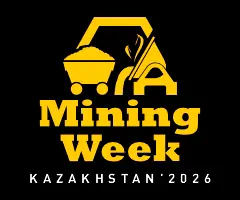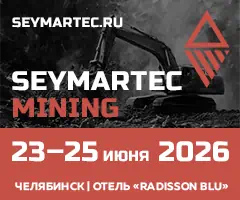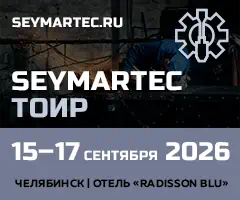Automated geological exploration mapping using convolutional neural structures and data acquisition methods based on swarms of drones
 N.L. Krasyukova, K.V. Kharchenko, O.A. Sagina, E.I. Moskvitina, L.K. Babayan
N.L. Krasyukova, K.V. Kharchenko, O.A. Sagina, E.I. Moskvitina, L.K. Babayan
Financial University under the Government of the Russian Federation, Moscow, Russian Federation
Russian Mining Industry №2 / 2025 p.184-191
Abstract: The objective of the study is to develop and validate an integrated approach to improve the accuracy, speed and cost-efficiency of the geological exploration processes. This objective was achieved using the methods of deep learning, swarm intelligence, geoinformation analysis and mathematical modeling. The data collected using a swarm of drones at pilot exploration sites served as the empirical basis of the study. The results obtained show a significant increase in the classification accuracy of geological features (up to 95%), a reduction of the data processing time (by 30-40%) and a decrease in the exploration costs (up to 25%) when using the proposed approach. The practical value of the work consists in creation of a scalable solution for automation and optimization of the exploration mapping processes, which contributes to increasing the efficiency and environmental sustainability of geological projects.
Keywords: geological exploration, convolutional neural networks, methods based on swarms of drones, automated mapping, deep learning, geoinformation analysis
For citation: Krasyukova N.L., Kharchenko K.V., Sagina O.A., Moskvitina E.I., Babayan L.K. Automated geological exploration mapping using convolutional neural structures and data acquisition methods based on swarms of drones. Russian Mining Industry. 2025;(2):184–191. (In Russ.) https://doi.org/10.30686/1609-9192-2025-2-184-191
Article info
Received: 12.01.2025
Revised: 27.02.2025
Accepted: 01.03.2025
Information about the authors
Natalya L. Krasyukova – Dr. Sci. (Econ.), Professor of the Department of State and Municipal Administration, Financial University under the Government of the Russian Federation, Moscow, Russian Federation; e-mail: This email address is being protected from spambots. You need JavaScript enabled to view it.
Konstantin V. Kharchenko – Cand. Sci. (Sociol.), Associate Professor of the Department of State and Municipal Administration, Financial University under the Government of the Russian Federation, Moscow, Russian Federation; e-mail: This email address is being protected from spambots. You need JavaScript enabled to view it.
Oksana A. Sagina – Cand. Sci. (Econ.), Associate Professor of the Department of State and Municipal Administration, Financial University under the Government of the Russian Federation, Moscow, Russian Federation; e-mail: This email address is being protected from spambots. You need JavaScript enabled to view it.
Ekaterina I. Moskvitina – Cand. Sci. (Econ.), Assistant at the Department of State and Municipal Administration, Financial University under the Government of the Russian Federation, Moscow, Russian Federation; e-mail: This email address is being protected from spambots. You need JavaScript enabled to view it.
Levon K. Babayan – Assistant at the Department of State and Municipal Administration, Financial University under the Government of the Russian Federation, Moscow, Russian Federation; e-mail: This email address is being protected from spambots. You need JavaScript enabled to view it.
References
1. Baraboshkin E.E., Ismailova L.S., Orlov D.M., Zhukovskaya E.A., Kalmykov G.A., Khotylev O.V. et al. Deep convolutions for indepth automated rock typing. Computers & Geosciences. 2020;135:104330. https://doi.org/10.1016/j.cageo.2019.104330
2. Cedou M., Gloaguen E., Blouin M., Caté A., Paiement J.-P., Tirdad S. Preliminary geological mapping with convolution neural network using statistical data augmentation on a 3D model. Computers & Geosciences. 2022;167: 105187 https://doi.org/10.1016/j.cageo.2022.105187
3. Courbariaux M., Hubara I., Soudry D., El-Yaniv R., Bengio Y. Binarized neural networks: Training deep neural networks with weights and activations constrained to +1 or –1. arXiv:1602.02830. https://doi.org/10.48550/arXiv.1602.02830
4. Jackisch R., Lorenz S., Zimmermann R., Möckel R., Gloaguen R. Drone-borne hyperspectral monitoring of acid mine drainage: An example from the Sokolov lignite district. Remote Sensing. 2018;10(3):385. https://doi.org/10.3390/rs10030385
5. Kumar C., Chatterjee S., Oommen T., Guha A. Automated lithological mapping by integrating spectral enhancement techniques and machine learning algorithms using AVIRIS-NG hyperspectral data in Gold-bearing granite-greenstone rocks in Hutti, India. International Journal of Applied Earth Observation and Geoinformation. 2020;86:102006. https://doi.org/10.1016/j.jag.2019.102006
6. Ramachandran R.K., Kakish Z., Berman S. I Information correlated Lévy walk exploration and distributed mapping using a swarm of robots. IEEE Transactions on Robotics. 2020;36(5):1422–1441. https://doi.org/10.1109/TRO.2020.2991612
7. Sang X., Xue L., Ran X., Li X., Liu J., Liu Z. Intelligent high-resolution geological mapping based on SLIC-CNN. ISPRS International Journal of Geo-Information. 2020;9(2):99. https://doi.org/10.3390/ijgi9020099
8. Shchur O., Mumme M., Bojchevski A., Günnemann S. Pitfalls of graph neural network evaluation. arXiv:1811.05868. https://doi.org/10.48550/arXiv.1811.05868
9. Wang C., Wang D., Gu M., Huang H., Wang Z., Yuan Y. et al. Bioinspired environment exploration algorithm in swarm based on Lévy flight and improved artificial potential field. Drones. 2022;6(5):122. https://doi.org/10.3390/drones6050122
10. Wang Y., Ksienzyk A.K., Liu M., Brönner M. Multigeophysical data integration using cluster analysis: assisting geological mapping in Trøndelag, Mid-Norway. Geophysical Journal International. 2021;225(2):1142–1157. https://doi.org/10.1093/gji/ggaa571
11. Лыгин В.С., Сирота А.А., Головинский П.А. Регуляризация процесса обучения графовых нейронных сетей методом распространения меток. Вестник Воронежского государственного университета. Серия: Системный анализ и информационные технологии. 2024;(3):92–101. Режим доступа: https://journals.vsu.ru/sait/article/view/12441 (дата обращения: 27.12.2024). Lygin V.S., Sirota A.A., Golovinski P.A. Regularization of the learning process of graph neural networks using the label propagation method. Proceedings of Voronezh State University. Series: Systems Analysis and Information Technologies. 2024;(3):92–101. (In Russ.) Available at: https://journals.vsu.ru/sait/article/view/12441 (accessed: 27.12.2024).
12. Назаров Т.Р., Мамедова Н.А. Автоматизированное решение задачи детектирования промышленных объектов на ортофотоплане с помощью нейронной сети. Программные продукты и системы. 2023;(1):144–158. https://doi.org/10.15827/0236-235X.141.144-158 Nazarov T.R., Mamedova N.A. Automated solution of the problem of detecting industrial objects on a orthomosaic using a neural network. Software & Systems. 2023;(1):144–158. (In Russ.) https://doi.org/10.15827/0236-235X.141.144-158
13. Ронкин М.В., Акимова Е.Н., Мисилов В.Е., Решетников К.И. Обзор применения глубоких нейронных сетей и параллельных архитектур в задачах фрагментации горных пород. Вестник Южно-Уральского государственного университета. Серия: Вычислительная математика и информатика. 2023;12(4):5–54. https://doi.org/10.14529/cmse230401 Ronkin M.V., Akimova E.N., Misilov V.E., Reshetnikov K.I. Review on application of deep neural networks and parallel architectures for rock fragmentation problems. Bulletin of the South Ural State University. Series: Computational Mathematics and Software Engineering. 2023;12(4):5–54. (In Russ.) https://doi.org/10.14529/cmse230401




